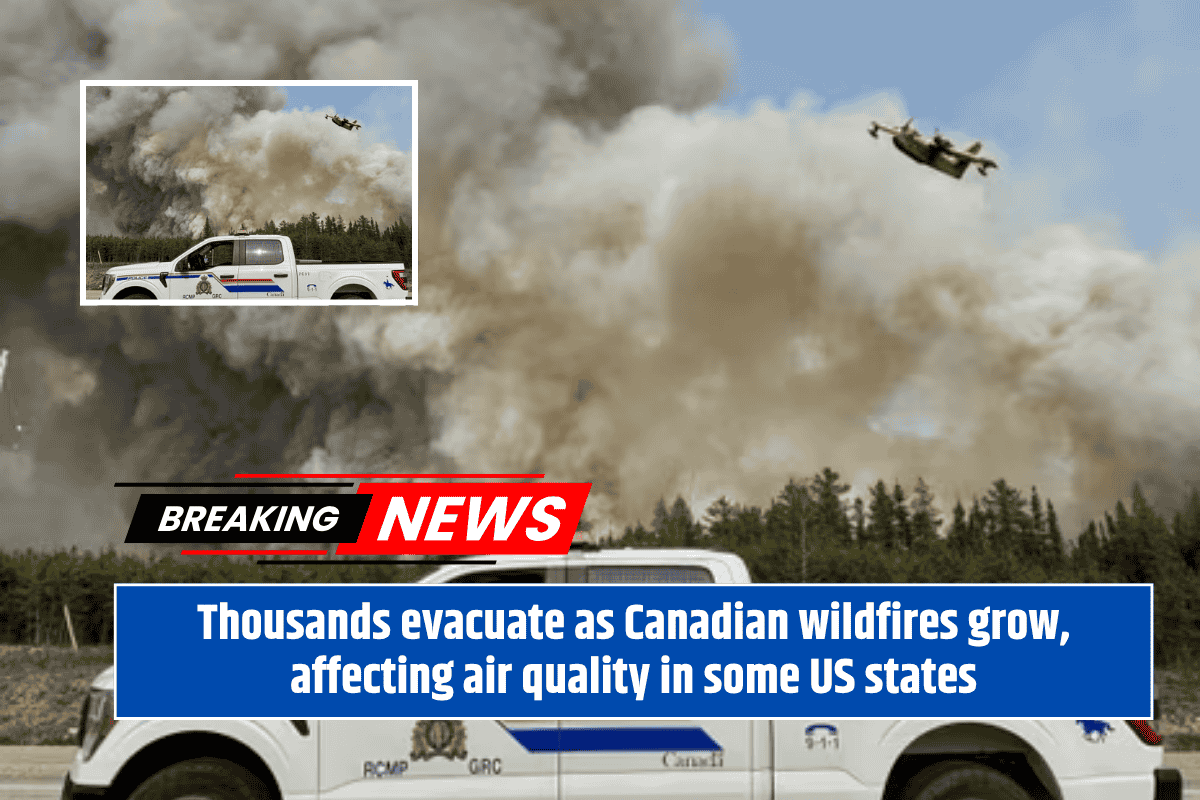More than 25,000 people across three Canadian provinces have had to leave their homes because of dozens of wildfires still burning. The wildfires have also made the air quality worse in parts of Canada and some nearby US states, officials said.
Most of the people who left their homes were in Manitoba, where the government declared a state of emergency last week. About 17,000 people were evacuated from Manitoba by Saturday. Alberta saw around 1,300 people evacuated, while Saskatchewan had about 8,000 people moved out of dangerous areas. Officials warned that the number of evacuees might increase.
The smoke from these fires is making it hard to breathe and reducing visibility in Canada and parts of the northern United States. Saskatchewan’s Public Safety Agency said air quality can change quickly and warned that higher smoke levels increase health risks.
Hot and Dry Weather Makes Fires Worse
Saskatchewan’s Premier, Scott Moe, explained that the hot and dry weather is helping the fires grow and threatening nearby towns. At the same time, resources like firefighters and support for evacuees are limited.
Moe said that the coming week is very important, hoping for a change in weather that would bring rain and help control the fires.
In Manitoba, more than 5,000 people evacuated are from Flin Flon, a town about 645 kilometers northwest of Winnipeg. Another community, Cranberry Portage, lost power because of the fires, forcing about 600 residents to leave.
The main fire near Flin Flon started about a week ago close to Creighton, Saskatchewan, and quickly spread into Manitoba. Firefighters have had trouble controlling it. Sometimes, planes that drop water to fight the fire can’t fly because of thick smoke or drones flying nearby.
Help from the United States
The US Forest Service is helping by sending an air tanker to Alberta and plans to send 150 firefighters with equipment to Canada.
In the US, air quality became unhealthy on Sunday in North Dakota and small areas of Montana, Minnesota, and South Dakota. A meteorologist said more smoke from Canada is expected to drift into the US over the next week.
In Idaho, a smaller fire burned 50 acres and caused some road closures.
Evacuation Centers and Support Challenges
Evacuation centers have opened across Manitoba to support people fleeing the fires. Some shelters are far south, near the US border. Winnipeg city has opened public buildings to house evacuees since hotels are already full with other visitors and evacuees.
Indigenous leaders in Manitoba said hotel rooms in cities where evacuees are arriving are full. They urged the government to ask hotel owners to give evacuees priority for rooms.
Kyra Wilson, Grand Chief of the Assembly of Manitoba Chiefs, said this is one of the biggest evacuations in Manitoba since the 1990s. She described how families and children have been sleeping on floors and waiting in hallways, calling for people to come together to help.
Wildfire Season and Its Impact
Canada’s wildfire season runs from May to September. The 2023 wildfire season was the worst ever, filling much of North America with dangerous smoke for months.
This year’s fires show how important it is to prepare for wildfires, protect communities, and support those affected.
The wildfires in Canada are forcing thousands to evacuate their homes, worsening air quality, and straining emergency services. The situation remains serious as hot, dry weather continues to fuel the fires, and support is stretched thin. Efforts to fight the fires are ongoing, with help from the US and local communities working together to protect people and property.






